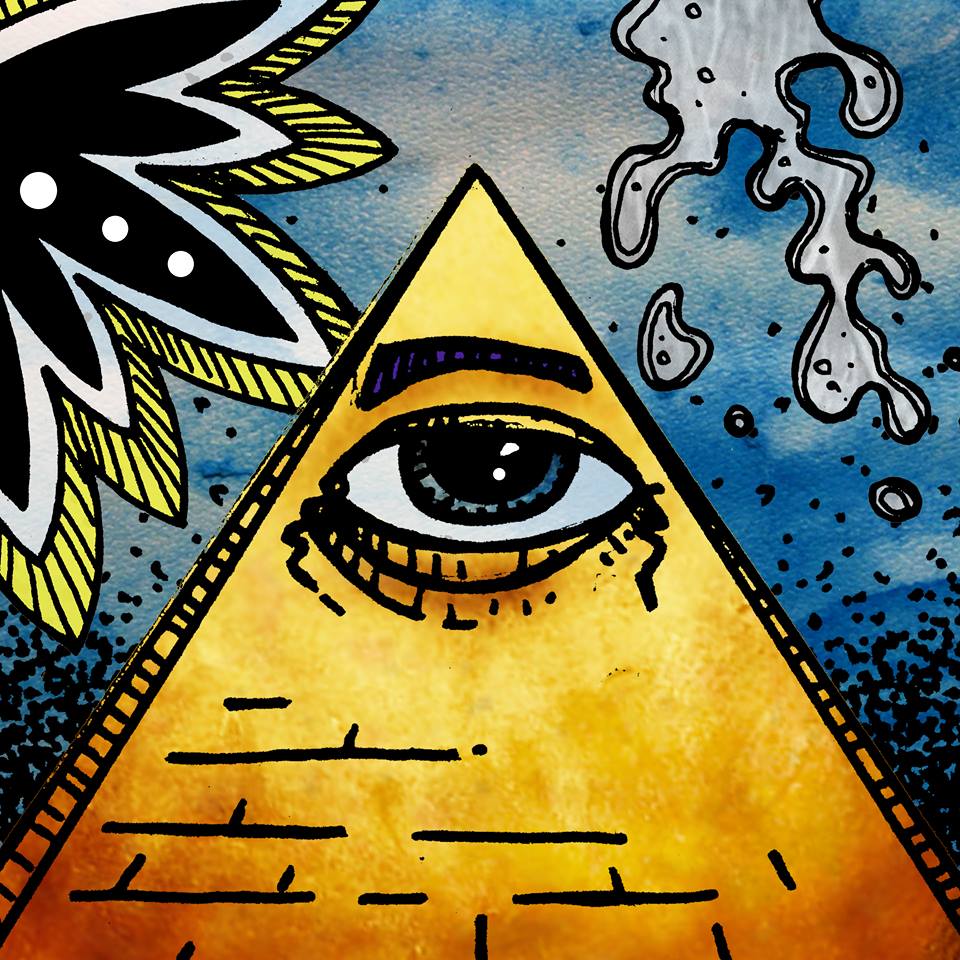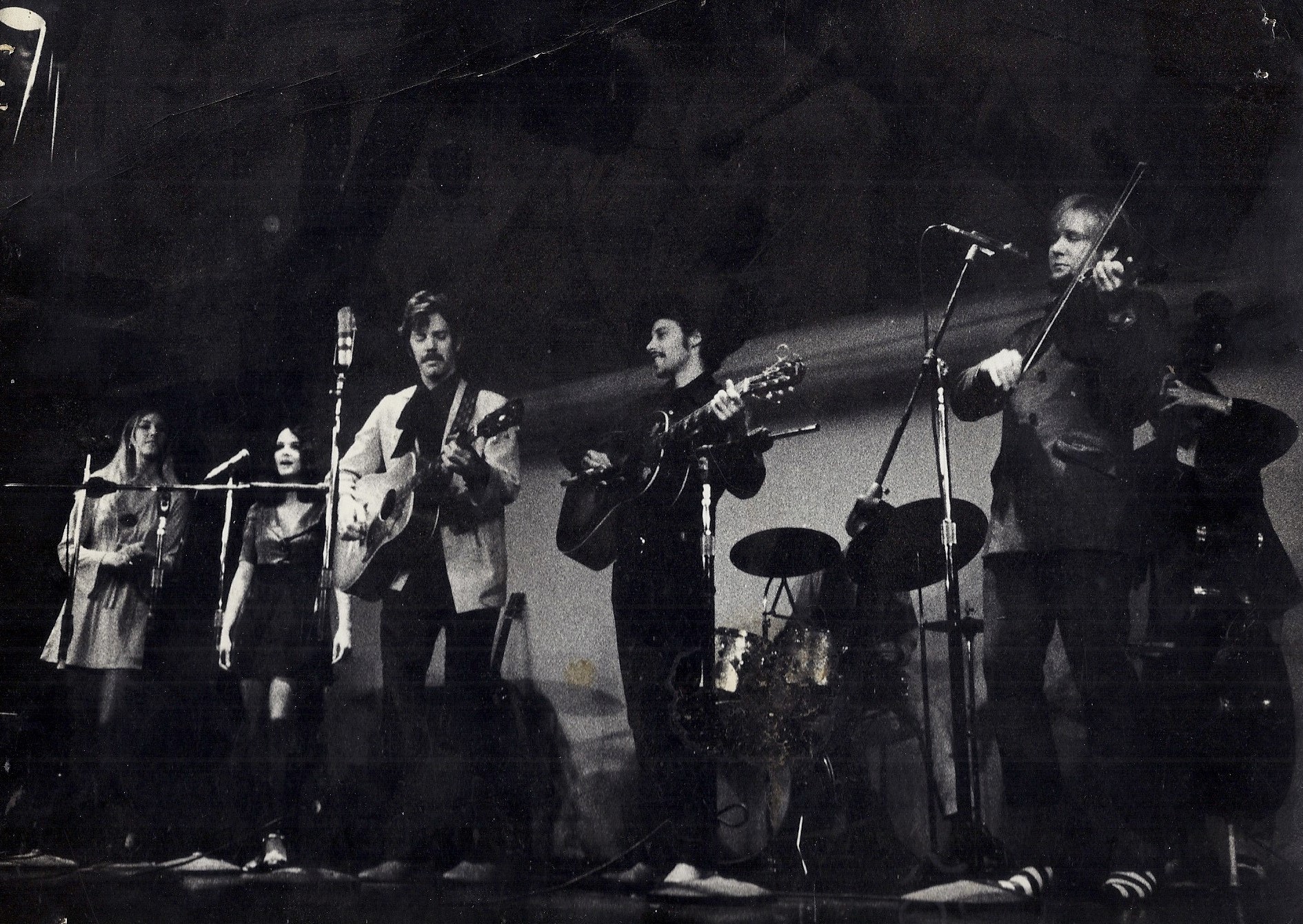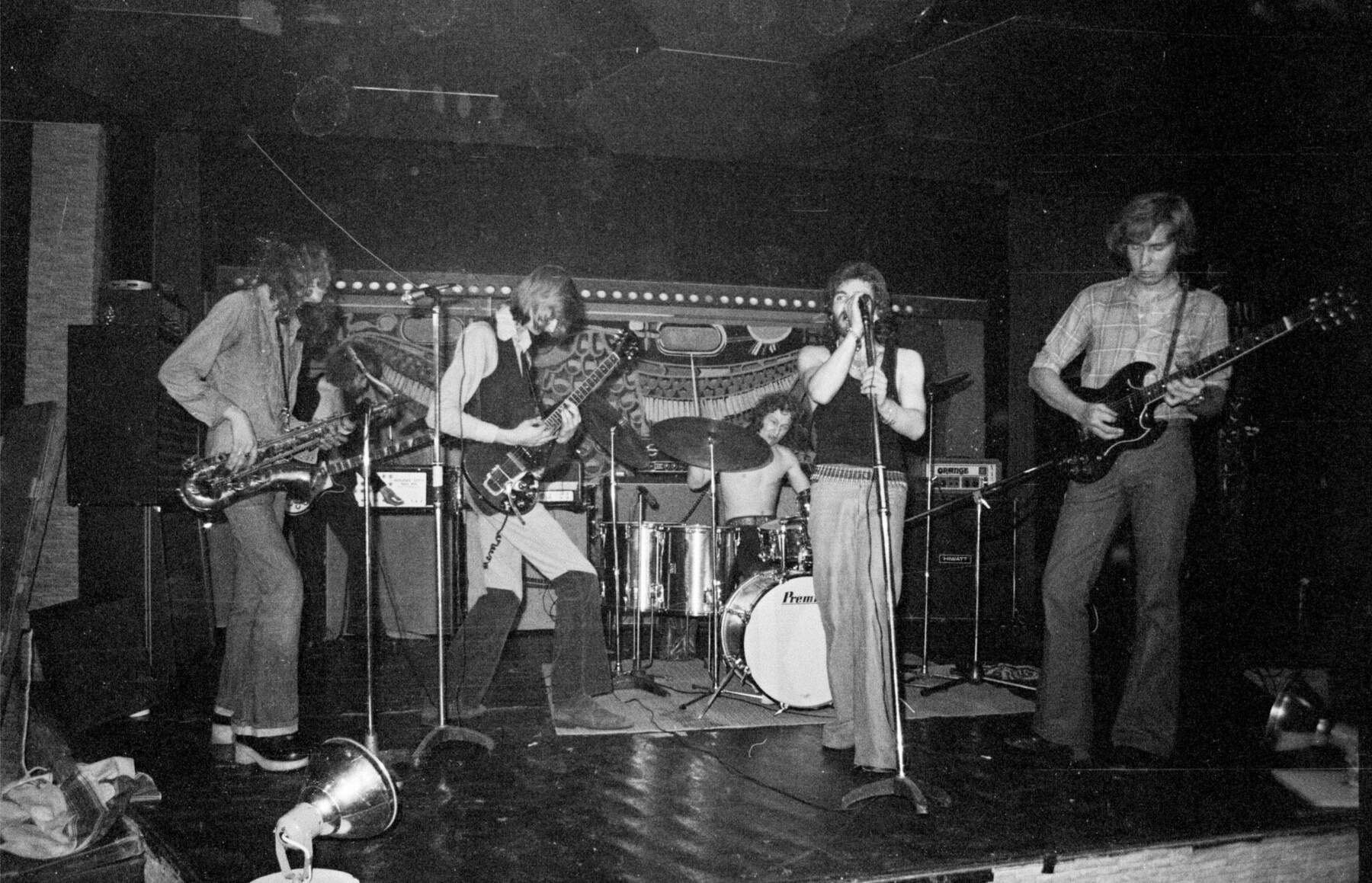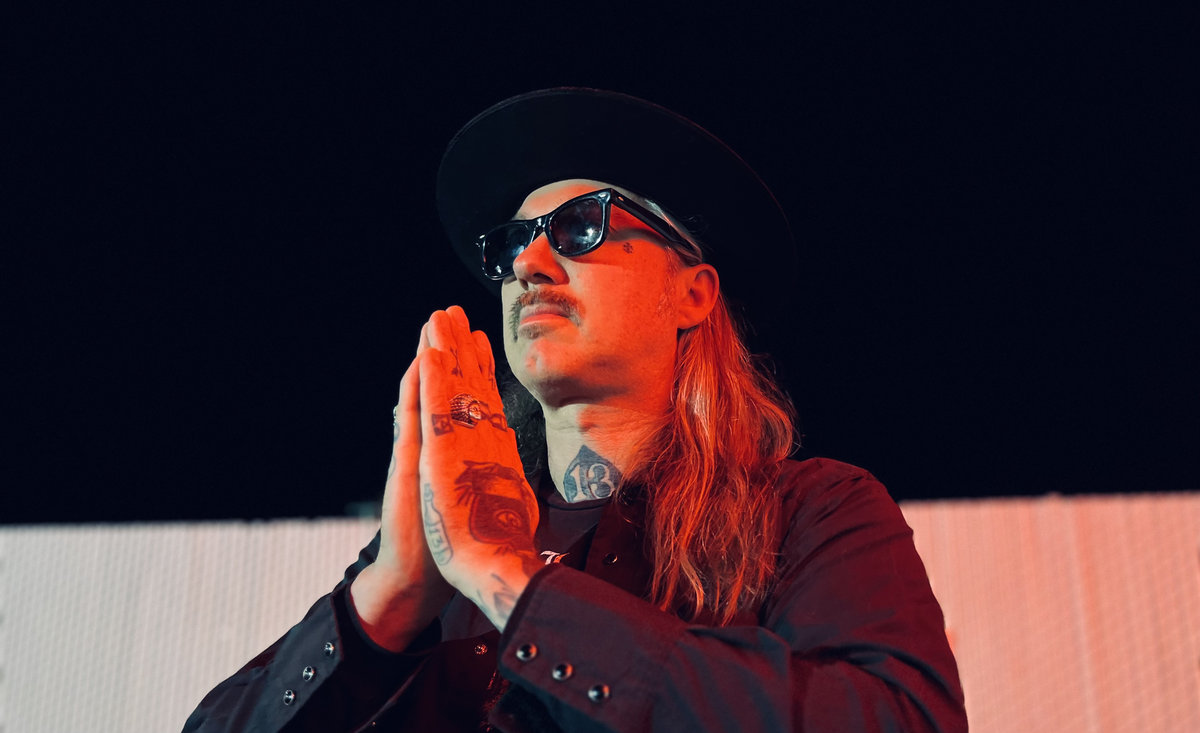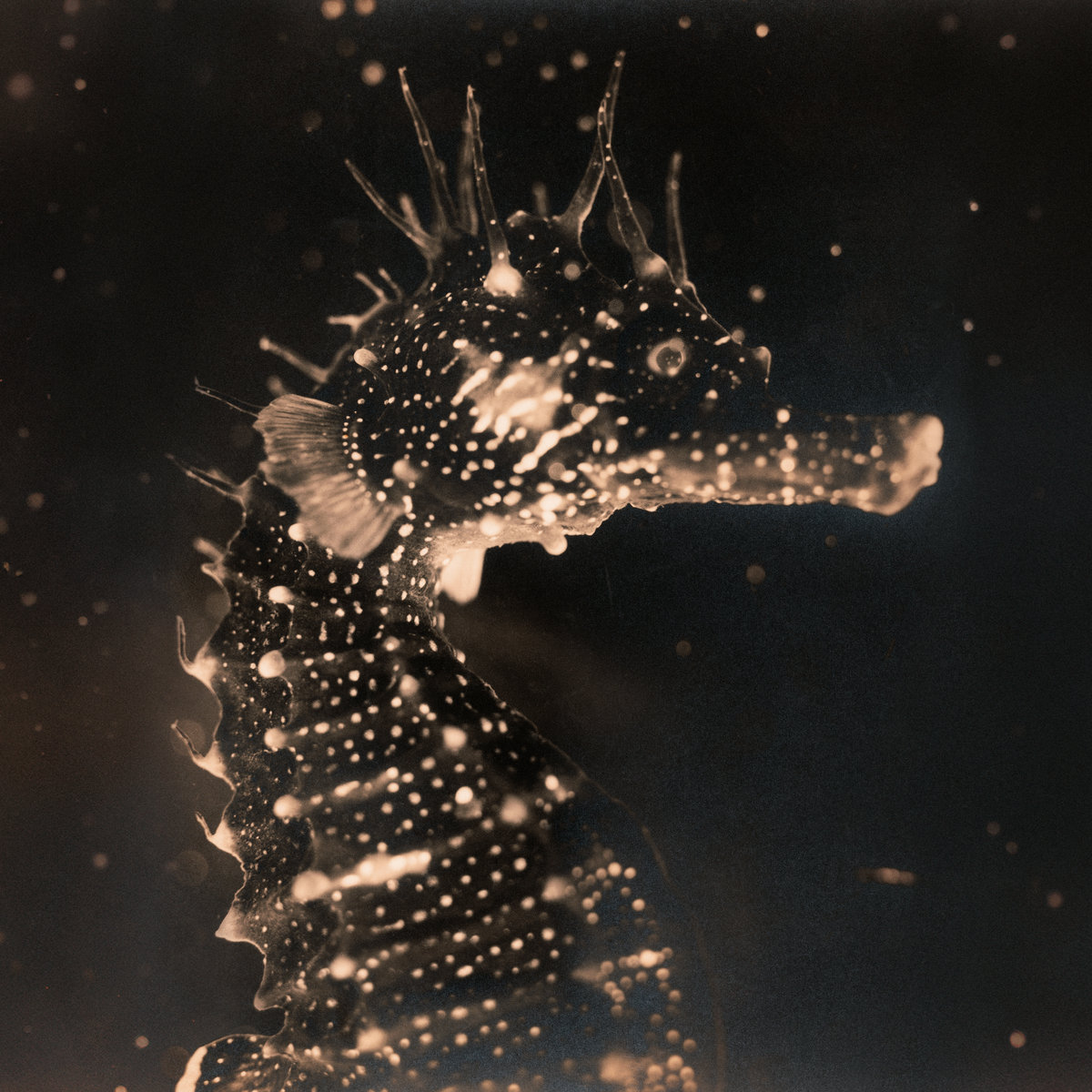From Dan Hicks to Maria Muldaur: John Girton Traces American Roots
John Girton embodies the authentic spirit of American music, having been a key collaborator with Dan Hicks and his Hot Licks for years.
With a career spanning decades, he has played everything from the wild surf rock of his youth with The Dischords to the polished sounds of jazz and swing. His guitar became integral to Hicks’s sound on albums like ‘Striking It Rich,’ capturing their incredible energy. Girton also spent nearly seven years touring internationally with Maria Muldaur, gaining firsthand experience of life on the road. His collaborations with Jonathan Richman further underscore his versatility and breadth as a musician.
Today, Girton continues to perform at local venues, bringing blues, swing, and jazz to life with a passion informed by a deep reverence for legends like Wes Montgomery. Whether working with Peter Wilson or other ensembles, his playing reflects a profound respect for the foundational styles and masters of American music.
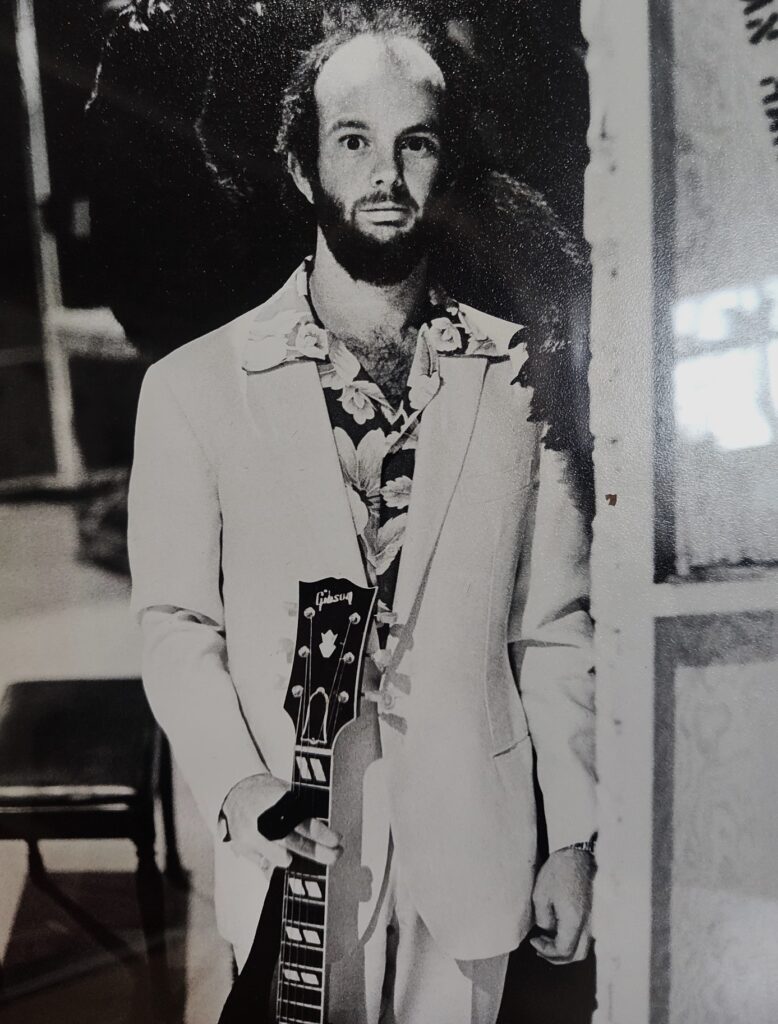
“We still did not miss our gig that night.”
Great to have you here. What’s been keeping you busy lately? I heard about Peter Wilson’s new release, ‘Three Words.’ What’s it like dueting with him alongside Maria Muldaur?
John Girton: Well, as you know, Maria Muldaur is an international pop star. Most of my nearly seven years with her was touring, playing concerts, etc. We traveled all over the US, to England, Europe, and Hawaii. We performed on television in the US and Europe. Maria is still touring these days. I last saw her at Dan Hicks’ memorial in Mill Valley, California. We are still in touch through social media.
Playing with Peter Wilson is quite a bit different. Peter is a good songwriter and singer. We mostly play at local venues, or gigs that are no more than a day’s drive. Occasionally we will play a concert-type engagement.
I’m hoping that Peter’s new single releases will move him to the next level. He is very entertaining, a good performer.
You and Maria Muldaur go way back. How did you two first meet, and what made your collaboration click since the ’70s?
I first met Maria when she hired me to play an acoustic guitar solo on a tune she was recording on her ‘Sweet Harmony’ album. This was around 1975. The tune was ‘We Just Couldn’t Say Goodbye.’ I also played on her version of ‘Old Rockin’ Chair,’ which was her duet with that song’s composer, Hoagy Carmichael. I was amazed that I got to meet him that day. I was also super excited to play with the musicians on those tracks, which included Kenny Burrell (rhythm guitar), Joe Harnell (piano), Earl Palmer (drums), and Plas Johnson (saxophone). The session was directed and led by the legend, Benny Carter. I was thrilled but somewhat intimidated to play with these amazing musicians.
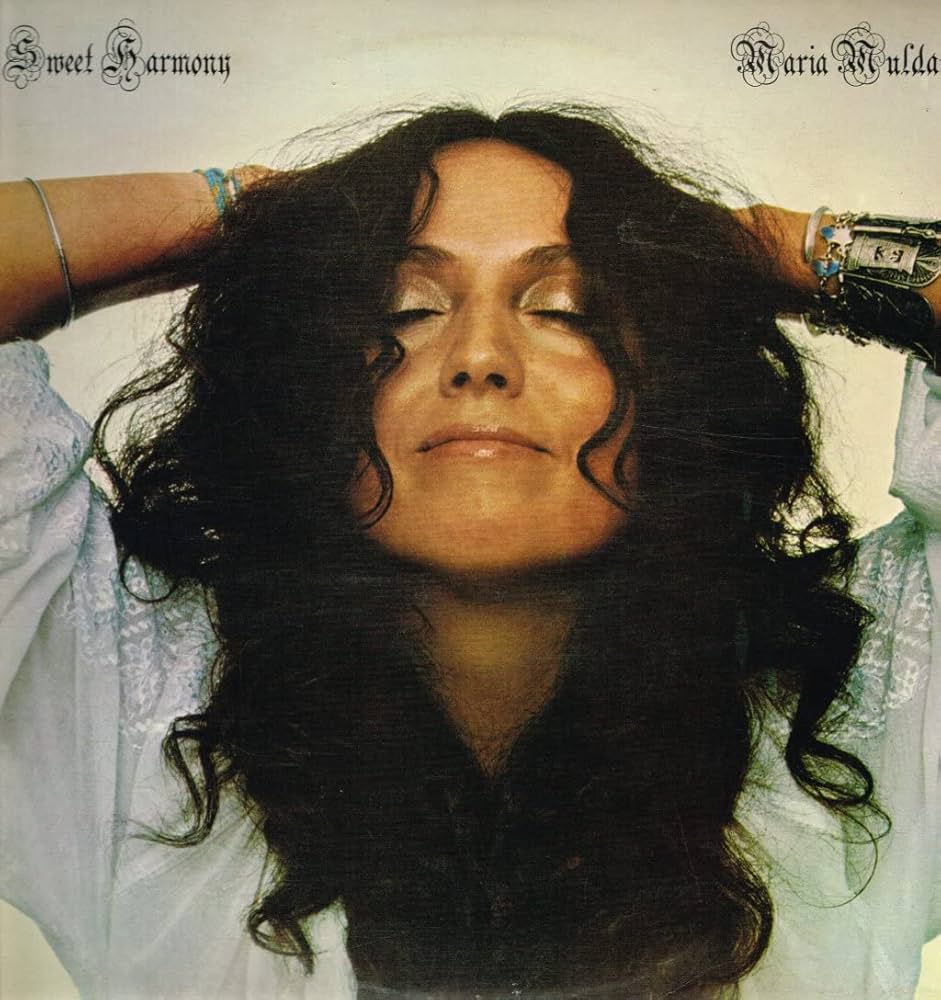
After this session, Maria hired me to play guitar in her touring band. At that time the members were Amos Garrett (lead guitar), Earl Palmer (drums), Mike Finnigan (piano and organ), Michael Moore (bass), and Ellen Kearney (vocals). A great band it was. I also played alto sax, clarinet, and mandolin in the band. Unfortunately, Earl Palmer and Mike Finnigan have passed on. I think Michael Moore is still doing well in New York. He is a wonderful player.
Let’s take it back to your roots in Northern California. What stands out from your childhood, and was there a moment when you knew music was your destiny?
Well, I grew up in Southern California. I was able to play tunes by ear on the piano by age three, I think. I took up ukulele when I was six or seven. I studied clarinet starting in the third grade and played all through school. I started on tenor saxophone when I was thirteen. I’ve always had a good ear for music, and the ability to play what I hear on almost any instrument. I started on guitar when I was eighteen.
When I was in college, I was playing in a band at a local club. After the gig, on my way home, I was pulled over by the police. I was a little wasted… part of our payment at the gig was in beer, as I remember. The cop asked me what I did. I thought about it for a minute and blurted out, “I’m a musician.” That was the moment I first considered music as my livelihood. I’ve really never done much else to earn a living. I have done some part-time work as a computer tech. I was fascinated by personal computers from the start and learned how to apply them to music.
When did you first start playing in bands? Which early groups helped shape your sound?
When I was just starting college, at eighteen, I was at a party where there were two guys playing surf music on electric guitars. I was amazed and enchanted by the sound. I immediately went to a local music store and rented a Harmony electric guitar. It was either a Meteor or a Rocket model. I don’t remember exactly. I started teaching myself to play surf music, helped by a friend named Mike Colletti. At the time, I could not play any chords, just melody.
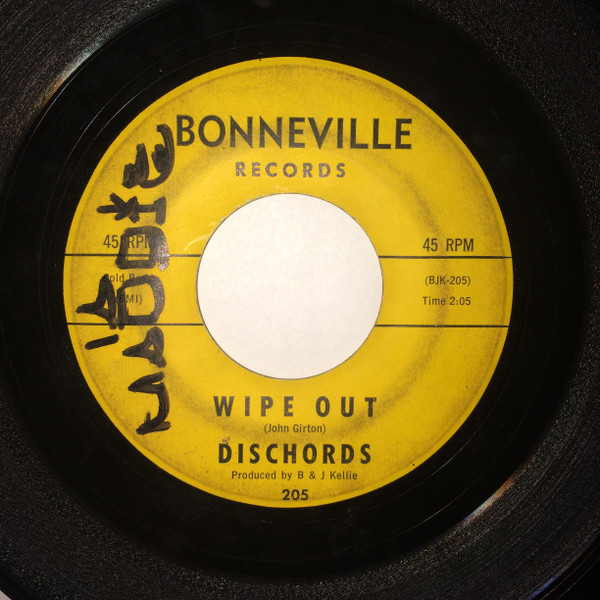
Mike and I started a band called The Dischords. We played surf music mostly. We played for junior high dances and the like. We made a recording called ‘Wipe Out,’ which came out before the Surfaris’ ‘Wipe Out.’ We played at a battle of the bands in the early ’60s which included the Surfaris. Our ‘Wipe Out’ was a completely different song, which I wrote. I think there is still a copy of it on YouTube… The Dischords ‘Wipe Out’.
I was in college until 1967 when I graduated. I was in a band for several years in L.A. called The Montana Mules. We mostly played clubs and did rhythm and blues covers. So, my early influences were West Coast jazz in the ’50s, then surf music in the early ’60s. Later I played mostly blues and rhythm and blues. I also did some studio work around this time until I moved to Mill Valley around 1968.
If you had to sum up your playing style, how would you put it? What old-school influences still shine through in your music today?
Today I mostly play local venues. I’ve had enough of the road. I spent about ten years out there. It tires you out.
I mostly play blues, swing, and jazz these days. I play with Peter Wilson sometimes. I’m in a blues band called Bob Mora and the 3rd Degree (I think there are some videos on YouTube) and a jazz quartet called Jazz Alibi. Most of my work is solo, though. Quite a bit of mellow jazz for happy dining…
My favorite guitarists are Ed Bickert, Pasquale Grasso, Jim Hall, Wes Montgomery among others.
I enjoy Sam Cooke, Fats Domino, Howlin’ Wolf, Muddy Waters, Magic Sam, The Beatles, and many others.
How did you first cross paths with Dan Hicks, and what drew you into the orbit of the Hot Licks?
Around 1969 I was living in Mill Valley, CA. I was teaching in a music store called Prune Music. It was owned in part by Randy Smith, who was the amp tech there. Randy would modify Fender amps by putting bigger transformers and more powerful tubes in them. He eventually started Mesa Amps, which are world famous now.
One day I was playing guitar in the store. A fellow came in who knew Dan. He told me Dan was looking for a guitarist. This was shortly after the ‘Where’s the Money?’ album came out. This guy took me over to Dan’s houseboat in Sausalito and I played for him and got the gig. I know he liked my playing but was also impressed by how much alcohol I could consume. We were drinking buddies for most of the time I was in the band. My guitar style at the time fit right in with the band.
Can you give us a peek behind the curtain on the three albums you recorded with the Hot Licks? I’m sure there are a few wild stories in there our readers would dig.
From what I remember, almost all of the recordings were done in a live situation. There was not a lot of overdubbing. The band was always very well rehearsed, and since we were touring constantly, we pretty much knew our material very well.
We worked with Tommy LiPuma (producer) and Al Schmitt (engineer) mostly. They were a great production team. Tommy always said that “Al is my ears.” Al was a wonderful engineer.
The first album I did with the group was recorded at Sunset Sound in Los Angeles. It was a big fancy studio and a little intimidating to me, but everything came out fine. I don’t remember any wild stories. That album was called ‘Striking It Rich.’ Actually, that was tongue in cheek. At that time, except for Dan, we were getting paid only fifty dollars per week. That went on for a long time, and financial considerations were a factor in the band breaking up at the height of our popularity.
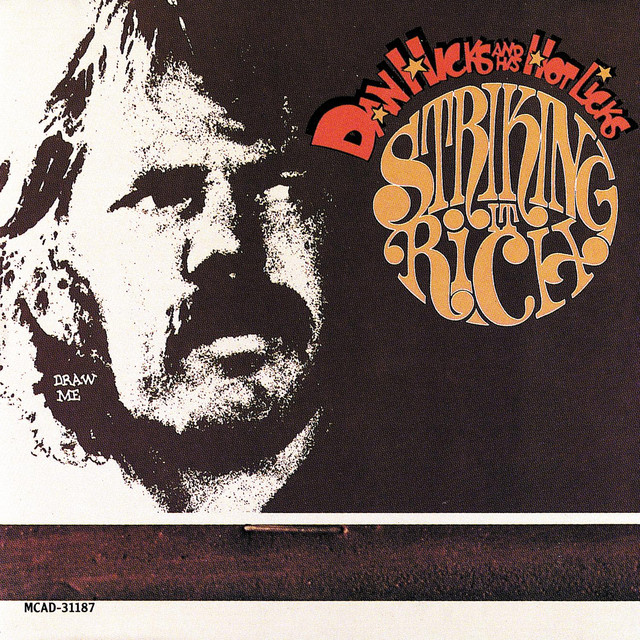
The next album was ‘Last Train To Hicksville…The Home Of Happy Feet.’ It was recorded at The Record Plant in Sausalito, California. I was living on a houseboat in Sausalito at the time, so it was just like a job. I’d get up in the morning and go to the studio. Again, we were very well rehearsed, and most everything was recorded live.
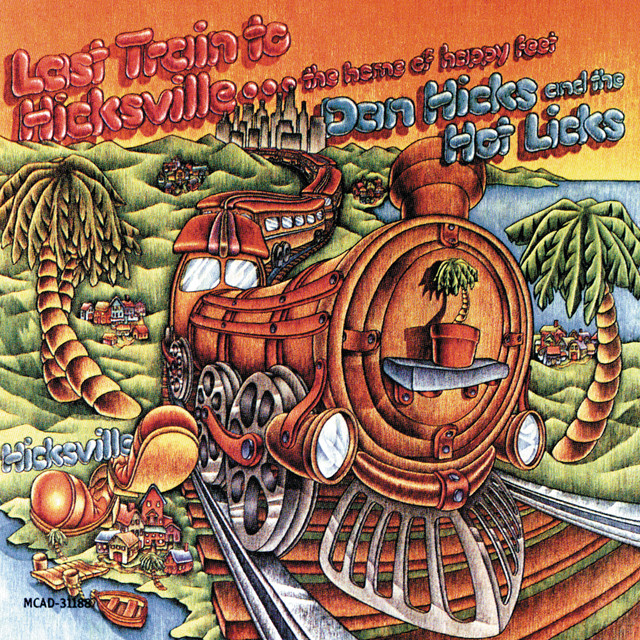
After that album, at some point, after more touring, Dan broke up the band one day. He had just signed with Warner Bros. Records, we had just begun to be represented by the William Morris Agency. So, suddenly we were out. The bass player (Jaime Leopold) and I went back on the road for a while to fulfill some contract commitments, but the band was over.
The next recording was for Warner Bros. in Los Angeles. It was for a soundtrack for a Ralph Bakshi film called ‘Fritz the Cat.’ Dan had to hire me and Maryann Price (singer) to go down and help him record the music. I think eventually all of the band members came down to help with the project. Somehow the film didn’t happen. The music was released as ‘It Happened One Bite’ as an audio album on Warner Brothers. I don’t know how well it sold. That album did have a lot of extra musicians added. Guitarist John Pisano and bassist Lyle Ritz (known as Ukulele Ike) played with us, among others I don’t remember.
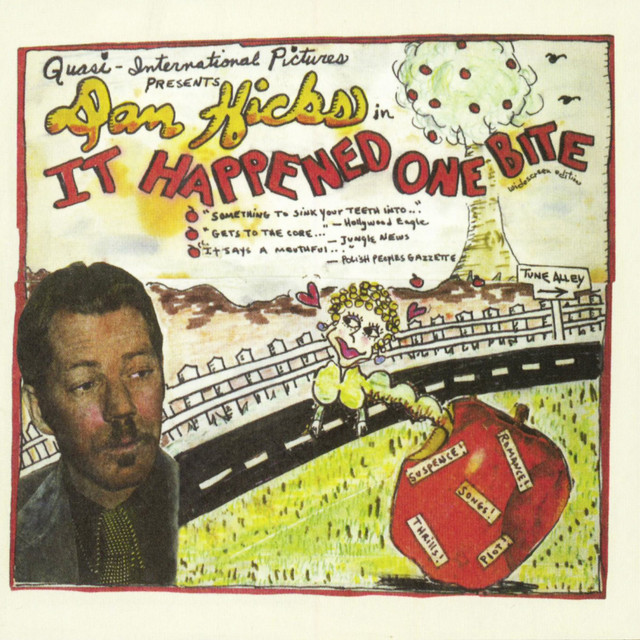
Speaking of the Hot Licks, what are some of the craziest gigs you remember? Any unforgettable moments that still crack you up?
Probably the craziest gig I remember was a concert in Cleveland, Ohio. We were opening for Steppenwolf, a pretty hard rock outfit. The fans started booing us immediately because we were not very loud and began to throw bottles, food, and whatever at us. Finally we had to leave the stage. One of the girls mooned the audience and we left the stage.
Another one was at Carnegie Hall in New York. We played well, but after the show, two dressing room guests from L.A. smashed up a few violins that were hanging on the walls there. That was really depressing.
Once we were playing in L.A. After the gig, everybody was having a party in one of the motel rooms. Fortunately, I had gone to bed early in my room and wasn’t at the party. The police came and took everybody to jail that night. At that time, pot was still illegal in California. I had to go down the next day and pick up everybody from jail. But we still did not miss our gig that night. It was in the news and probably was good publicity. We played many sold-out shows at the Troubadour after that, haha.
What about life on the road with Maria Muldaur? Got any fun backstage or touring tales to share?
Well, things were pretty tame, as I remember. It was just very tiring. The band was really good. We did TV shows, concerts, etc. When we toured Europe, we were all crammed into a tiny Eurovan. Really long drives, from country to country. I had the best steak in my life in Paris, France. It was fun checking out the red light district in Amsterdam. Girls in the windows. Great adventure.
I do remember several musicians sat in with us at various times. Jr. Walker sat in with us one night at a gig. The next day I had breakfast with him. I asked him, “How much should I tip?” His answer was, “Tip lightly on outa here.”
Another time Dr. John sat in with us at a gig in New York City. That was fun, except when the band took a break, somebody stole my guitar pedals from the stage.
And I think on one of my last tours with Maria, we had a five-night stand at the Hyatt Regency Hotel in Detroit, Michigan. After our first night, somebody broke in and stole all of the band’s equipment. I lost a nice 335 guitar. We tried to rent equipment so we could finish the gig, but we ended up cancelling and going home.
After your international adventures, what sparked the idea to form your own outfit, the Girtones?
I always tried to play local gigs when I was home between tours. I was living with Maryann Price, one of the Lickettes (Dan’s lady singers). We started the Girtones at the end of the Hot Licks. It was a quartet or quintet, depending upon the pay scale. We were pretty popular in the SF Bay Area. We played quite often in the Santa Cruz area. I think that was in between tours with Maria. Maria shared roadies with Jackson Browne, and they got Jackson to come and sit in with us. That was fun. The Girtones almost had a record deal, but too many lawyers messed it up.
What was touring England like as a solo act? How did the scene there vibe with your style?
Touring England was a blast. I played mostly music pubs. I mostly played blues tunes, originals, and jazz standards. I used to sing a lot back then and was quite well received.
Oddly, the gigs paid at least twice the money for half the time. Gigs, at the most, lasted two hours, with a break. At that time, in the U.S., I had to play four hours for half the money.
Musicians are so much more appreciated in Britain and Europe than they are in the United States. If I wasn’t too old, I would go back in a minute.
Tell us about your gigs with Backwoods Jazz and the George Souza Band. What unique flavor did each bring to your journey?
Backwoods Jazz was a local group that did swing tunes and folk songs. Some Irish music and other stuff. One time they actually played for the Queen of England when she was here for some reason. It was a fun band. Unfortunately, one of the main players passed away a couple of years ago and that was the end of the group.
I haven’t played with George Souza for a few years. His band was basically a cover band but played some jazz and rhythm and blues. George always had good players.
What was it like working with Jonathan Richman? How did that collaboration come together?
Jonathan Richman and I go way back. I recorded several of his albums when I had my recording studio. I was in a local band called the Dogtones. I played guitar, sax, and keyboards with the Dogtones. One of the other guitarists was Brennan Totten. Somehow he became producer for Jonathan. We recorded a few of his albums at my studio. Later I went on the road with Jonathan as a bass player and recorded an album in L.A. with him. After that band was done, Jonathan has toured exclusively with his drummer, Tommy Larkin.
Jonathan is one unique entertainer. His music is kind of childlike, often simple musically, but he puts a lot of emotion and energy into it. He has a huge number of loyal fans. I saw him a couple of months ago. He is still touring and seems to be doing well. I really enjoyed working with Jonathan.
Digging into your latest CD, ‘You Are There’ — what inspired this project, and what does it mean to you on a personal level?
That recording was done in my home studio quite a few years ago. It basically was meant to be sold at my local gigs. It contains some jazz standards, some original songs, and some old rock tunes. It sounds great, but is really nothing special.
Do you have any unreleased tracks or nearly forgotten projects from your early days that fans might not know about?
I have a live recording from one of my solo trips to England that is pretty good. None of my CDs or recordings are available these days. I wouldn’t even attempt to reissue them. With all of the internet streaming, especially Spotify and other sites out there, it’s almost impossible to make any money. Especially for the effort you have to put in. It’s like slave labor. I wish Peter Wilson good luck with his attempt to “release” his music.
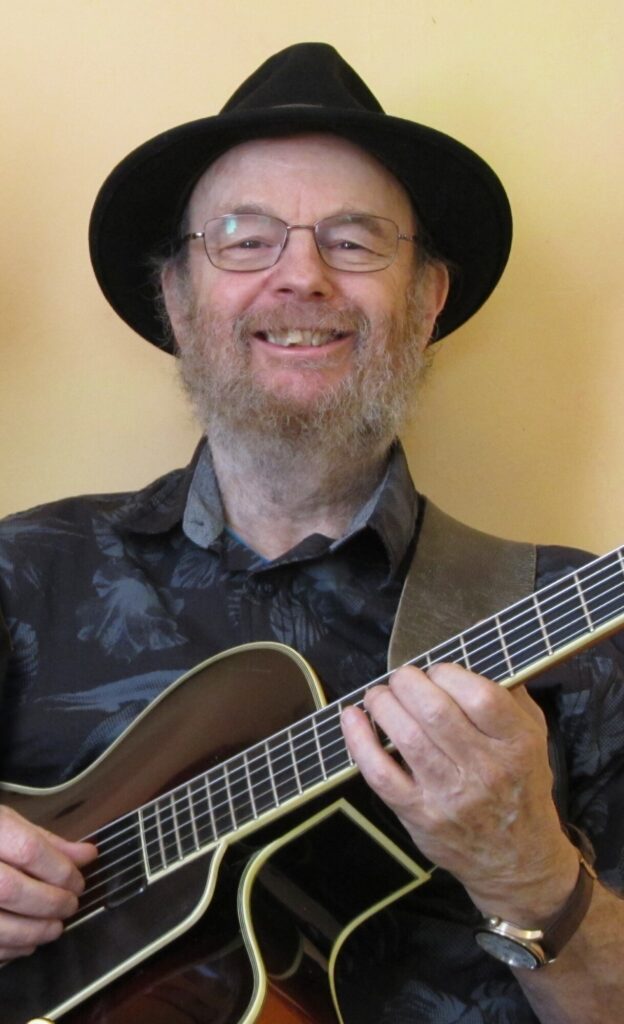
Thanks for taking the time to chat. Any final words or thoughts you’d like to leave with all the cool cats out there?
Don’t quit your day job! Thank you, Klemen.
Klemen Breznikar
Dan Hicks and His Hot Licks, late December 1972 – early May 1973. From left to right: Naomi Eisenberg, Maryann Price II, Dan Hicks, Jon Weber, Bob Scott, Sid Page, and Jaime Leopold. (Mike Somavilla archive)
John Girton Website / Facebook
